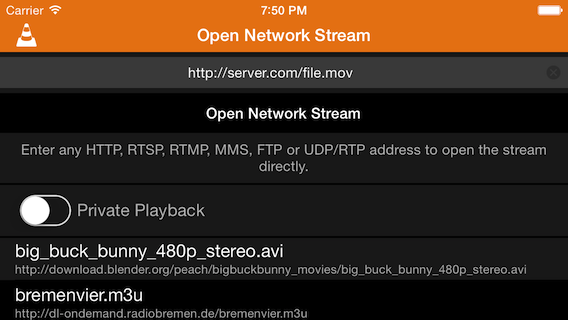

MULTIPLE VLC STREAMS ONE WEB INTERFACE PASSWORD
If you get a 401 Unauthorized error message and you have set a password on the interface as described in #Access_control below, leave the username field blank and enter the password that you have set. For your information, you can connect to a web server listening on an arbitrary port using syntax, so you can test the VLC web interface using this URL. Now, when you start VLC, a web interface will be created and running on your computer on port 8080 (by default, but you can change this yourself). To launch it as a secondary interface you should launch VLC with the parameter "-extraintf=http" or set http as an extra-interface in the Preferences area mentioned above. To use this interface as the primary interface, launch VLC with the parameter "-I http" or set http to be the primary interface via the preferences (see below for instructions). forBoundedOutOfOrderness(Duration.ofMillis(OUT_OF_ORDER_NESS)) Val text = env.socketTextStream("localhost", 9999) Here you want to connect to the local 9999 port. Obtain the input data by connecting to the socket. Val tableEnv = StreamTableEnvironment.create(env, bSettings) Val bSettings = EnvironmentSettings.newInstance().useBlinkPlanner().inStreamingMode().build() Val env = StreamExecutionEnvironment.getExecutionEnvironment set up the streaming execution environment You can learn more about it in the documentation. Kafka Streams is built on top of the Kafka producer/consumer API, and abstracts away some of the low-level complexities. In the context of the above example it looks like this: You use it in your Java applications to do stream processing. Kafka Streams a stream processing library, provided as part of Apache Kafka.



Stream processing is used to do things like: This, in a rather crude nutshell, is stream processing. Maybe that stream we'll use for reporting, or driving another application that needs to respond to only red widgets events: We want to filter that stream based on a characteristic of the 'widget', and if it's red route it to another stream. Let's imagine we want to take this unbounded stream of events, perhaps its manufacturing events from a factory about 'widgets' being manufactured. An unbounded stream of events could be temperature readings from a sensor, network data from a router, order from an e-commerce system, and so on. Taking that unbounded stream of events, we often want to do something with it. Stream Processing is based on the fundamental concept of unbounded streams of events (in contrast to static sets of bounded data as we typically find in relational databases). What we want to achieve is to add artificial delay between window and sink operators to postpone sink emition. It is located in one region (with a read replica in a different region)īecause we are using event time characteristics with 1 minute tumbling window all regions' sink emit their records nearly at the same time.It is hosted in AWS via RDS (currently it is a PostgreSQL).
MULTIPLE VLC STREAMS ONE WEB INTERFACE CODE
The exact same code is running in each region.It is hosted in AWS via Kinesis Data Analytics (KDA).The application emits the data into a Postgres sink.So, for each session we will have 1 computed record.The windowing is specified by a reduce and a process functions.The application has windowing with 1 minute tumbling window.The application shards ( keyBy) events based on the sessionId field.The application uses event time characteristics.We have an Apache Flink application which processes events


 0 kommentar(er)
0 kommentar(er)
